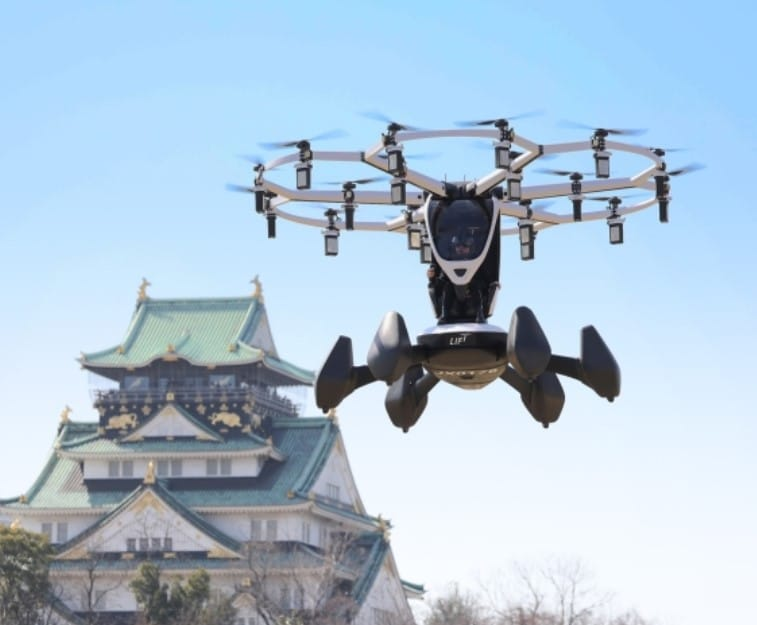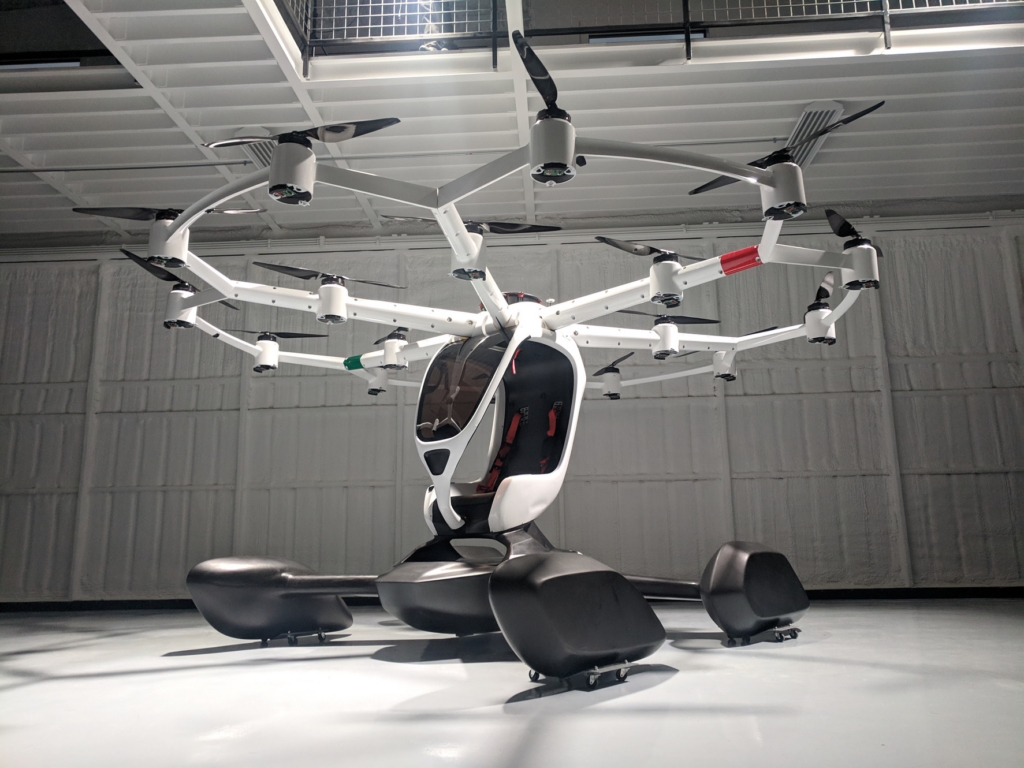LIFT Aircraft emerges as a pioneer in personal aviation with its revolutionary HEXA drone, founded by Matt Chasen. This company has challenged the limits of flight with an aerial vehicle that does not require a pilot’s license to operate.
The HEXA is a drone that uses 18 electric rotors to achieve vertical takeoff and landing. Its clean and safe design makes it ideal for personal flights. Although its autonomy is 10 to 15 minutes, it is capable of reaching 70 km/h which is more than enough for an exciting and unique experience. In addition, no pilot’s license is required to fly the HEXA, making it accessible to anyone. LIFT became the first company in the United States to start mass production of an eVTOL aircraft.
LIFT Aircraft began their journey in November 2017 with the goal of creating an electric vertical take-off and landing (eVTOL) aircraft. They created the HEXA, an innovative prototype, designed specifically for lift flights and in compliance with FAR Part 103 regulations, meaning no pilot’s license is required to fly. LIFT Aircraft’s HEXA was designed to comply with the U.S. Federal Aviation Administration’s FAR Part 103 regulations. These regulations allow the flight of certain low risk aircraft in sparsely populated areas without the need for a pilot’s license. In addition, the HEXA is equipped with a computer-aided flight control system that makes it easy to operate, making it possible to fly without a pilot’s license. However, although a pilot’s license is not required, passengers receive basic training before flying to ensure their safety. The Hexa, with its design that allows passengers to fly without a pilot’s license, marks a milestone in the flying experience. Its simple operation, with a three-axis joystick and an autopilot mode available through a touch screen, heralds a new era of autonomy and freedom. LIFT’s vision goes beyond offering recreational flights; it aims to transform urban mobility, relieve congestion and provide a sustainable and exciting alternative to traditional transportation. By running entirely on electric power, the Hexa aligns itself with a greener future, minimizing the carbon footprint and leading the way to a more environmentally friendly society. In January 2018, the scaled-down prototype made a successful flight in Hungary, validating key engineering assumptions. Subsequently, in July 2018, they achieved the first unmanned flight with a full-scale prototype in Lago Vista, Texas. Less than a year after its founding, LIFT CEO Matt Chasen piloted the HEXA on its first manned flight in October 2018. They introduced the HEXA to the public at SXSW 2019, where it was very well received.


In 2018 LIFT Aircraft had begun its long-awaited tour of the United States. This tour marked a monumental milestone in the company’s journey to democratize personal flight and redefine urban transportation. LIFT’s revolutionary pay-as-you-fly experiences were available to the public. The company’s inaugural mobile location was operating through April 28 at Lakeland Linder Airport, home of the famed Sun ‘N Fun Aerospace Expo, where LIFT was also seen flying in air shows and allowed customers to fly during the event (April 9-14).
Customer flights will continue in Austin, Texas in May, with further expansion into additional cities to be announced in the near future.
In addition, LIFT Aircraft has conducted eVTOL piloted flight demonstrations in Japan with its aircraft, HEXA. These flights were conducted in partnership with Marubeni Corporation, with whom it is partnering to develop and advance eVTOL technology.
LIFT Aircraft has several exciting projects in the works for the future. Recently, the company was awarded a Phase 3 contract through the U.S. Air Force Agility Prime Program to continue experimentation and flight test efforts around the HEXA, its single-seat electric eVTOL aircraft. This new contract will allow LIFT Aircraft to continue experimentation and use case development through a rapid and rigorous flight test program.
Also, the company is actively working to take personal aviation into the future, offering a new era of mobility and pushing the boundaries of what is possible in aviation.
LIFT Aircraft is exploring several military applications for its HEXA aircraft. One of the main applications being considered is manned search and rescue. The HEXA, with its ability to fly in very small areas, can benefit warfighters who may need help in areas where other manned aircraft cannot reach. In addition, the company is working on improving first responder capabilities by enabling substantially faster response times to remote locations. They are also considering significant increases in useful flight durations and ranges for different military platforms.
LIFT Aircraft is also collaborating with Parallel Flight Technologies to develop a hybrid propulsion solution for the HEXA aircraft. This technology has the potential to extend HEXA flight time from 15 minutes to well over an hour and dramatically increase range. If successful, LIFT would offer both electric and hybrid eVTOL flights in its strands, depending on the route and distance of the flight.
Some of the features of Lift Aircraft:
Both Lift Aircraft and its associated drones are designed with a focus on modularity, allowing for easy customization and adaptation to a variety of applications. From package delivery to search and rescue missions, these aerial vehicles can be quickly configured to meet the specific needs of each task.
Equipped with advanced navigation and control systems, Lift Aircraft drones are capable of operating autonomously with an exceptional level of precision and safety. This technology allows drones to perform complex tasks without the direct intervention of a human operator, increasing efficiency and reducing the risk of human error.
Lift Aircraft drones are equipped with intelligent connectivity capabilities that allow them to communicate with each other and with a variety of devices and systems on the ground. This connectivity facilitates coordination and real-time data exchange, which improves operational efficiency and safety of aerial missions.
Its drones are designed with a focus on energy efficiency and environmental sustainability. Using state-of-the-art electric propulsion technologies, these aerial vehicles minimize their carbon footprint and offer an environmentally friendly alternative to conventional transportation methods.
Whether operating in densely populated urban environments or in remote and challenging areas, Lift Aircraft drones are designed to adapt and operate effectively in a variety of environmental and geographic conditions. This adaptability makes them ideal for a wide range of applications, from surveillance to cargo transport.
Dirección: C. León y Castillo, 89, 35004 Las Palmas de Gran Canaria, Las Palmas